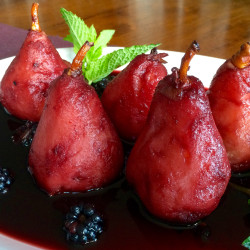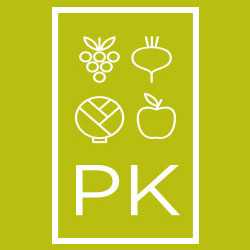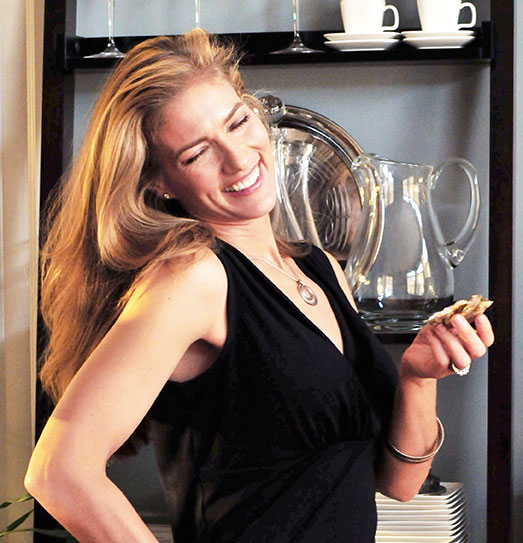Friday, January 27, 2012
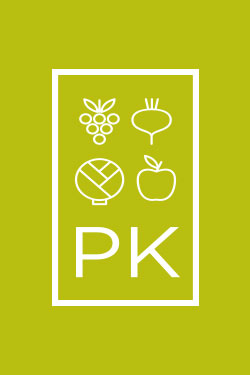 Whether it’s a new year’s resolution to lose weight or a spring commitment to getting back in shape, there are a lot of things you can do to help you get a better handle on your health. To begin the process, I encourage you to recalibrate the way you think about your diet and gain a better handle on what you’re eating by measuring your diet using a food record.
Whether it’s a new year’s resolution to lose weight or a spring commitment to getting back in shape, there are a lot of things you can do to help you get a better handle on your health. To begin the process, I encourage you to recalibrate the way you think about your diet and gain a better handle on what you’re eating by measuring your diet using a food record.
Whether you elect to do any of the above or not, today’s post, my third on the topic, is my first specific strategy for healthy eating and weight loss: Clean House. In other words, do not keep tempting, high-energy/low-nutrient foods in your home (or desk … or car… or pocket …). Whatever your vice, tasty treats are often eaten in large portions and contribute substantial calories with very little nutritional value. And guess what? You wouldn’t eat this stuff nearly as often if it weren’t at your fingertips. Obvious, perhaps, yet many people don’t take this seriously—or follow the wrong advice about what is “healthy”—and thus their cupboards and offices are filled with nutritional landmines.
First Things First: Get These Foods Out of Your House (and Desk) Now
Let’s begin by defining generally what kinds of foods I’m talking about expunging from your home and workplace. Please note that I am not saying I don’t eat some of these very tasty things—it’s just that I don’t keep them at arm’s length.
- Cookies, granola bars, and other cookie-like things (low/no-fat and -sugar varieties count)
- Desserts such as cakes, pies, puddings, and so forth (same notes on fat and sugar as above)
- Salty snacks including potato chips/crisps, pretzels, doodles, crackers, or funyuns—anything of that ilk (even if baked or low-fat, and especially if it has a name and ingredient list that scream “This isn’t food!”)
- Frozen desserts like ice cream, frozen yogurt, etc. (includes dairy and non-dairy versions of any fat or sugar content)
- Candy or chocolate Need I say more? Yes, actually, and I’ll do so shortly.
- Food(s) you know you should be eating less frequently that contribute excess calories to your diet. You know what these are for you and can gain an even greater understanding if you actually measure your diet...
Do Not Misunderstand!
Let me reiterate, loud and clear, that I eat and enjoy all of the foods on the above list at times. For example, anyone who reads my blog knows about my obvious love of chocolate, whether brownies, molten lava soufflés, or traditional layer cake with mocha buttercream pictured here. And, of course, my oft discussed, beloved pumpkin whoopie pies with maple buttercream. I grew up baking with my mother, and it’s something I enjoy tremendously, both the doing and the eating. HOWEVER— and see how I brought out the all caps to underscore this point?—I do not bake with any kind of regularity and do not generally keep such foods around the house, whether homemade or store-bought. If they are here, I will eat them, as I was trained to eat dessert after every meal. (If you have kids, try and avoid this practice.) This is a behavior that I’ve had to work hard to modify over the years, in large part by not keeping such things in the house and consuming them only on special occasions.
Research-Based Nutritional Advice & Behavioral Strategies
I think why I’ve highlighted the above food groups is fairly obvious, but let me briefly elaborate to clarify a few of the nutrition mythunderstandings out there.
(That’s a horrible, horrible pun, I know. It’s Joss Whedon’s fault. Read on anyway please.)
Forget reduced fat- and sugar varieties. (Generally speaking.) Unless you have a diagnosis that requires special dietary interventions, which is not the focus of this blog and should be discussed with a physician and/or clinical dietitian specifically trained in that area, remember that reduced-fat and -sugar variants of sweet snacks and desserts still contain calories and often don’t help to break poor dietary habits (such as the need to eat these things as part of your usual diet); this same logic applies to ice cream, candy, and so forth. Not to mention the lengthy, Latin-like list of ingredients on many of these highly processed foods. Low-fat foods simply add sugar, for example, and they also tend to be very high in white flour, a refined grain that is metabolized much like sugar. And, even if made with whole grains (like granola bars, which contain oats) or home baked with “natural” ingredients, most cookies / pies / cakes / etc., they still have some type of sweetener and all contribute many calories and few nutrients to the diet. The bottom line is that Americans consume way too much sugar, and reducing your intake will help you lose weight and decrease your risk of type 2 diabetes and heart disease. (I’m leaving the topic of whole fruit for another time, but suffice to say that it can satisfy the need for something sweet after a meal while providing very few calories and a host of beneficial phytonutrients.)
Have a salt tooth? If you don’t have a sweet tooth, your preferred go-to foods are probably salty, whether chips, crackers, pretzels, or whatever. Here in the US, the choice is seemingly endless, with rows and rows of colorful, crinkly bags filled with crunchy goodness that contribute to your sodium intake, which is also a major risk factor for heart disease. And, even if unsalted, they still contribute energy to your diet with very few nutrients. Baked chips still have calories, even if they are lower in total fat and have no trans fats, right? And pretzels have very little fat but are pretty much all flour, usually white (=sugar). Low- or no-sodium baked whole grain tortilla chips, pretzels, or crackers are better choices given the alternatives, but they are still not something you should be eating as a regular part of your diet.
Not all salty snacks are the same. You probably already appreciate that nuts and popcorn are not the same as the above “salty” snacks, given these are whole foods that can be enjoyed without added sodium (or far less than you’ll get in a processed product). As far as snacks go, they are pretty darn good from a health perspective. Now for the obligatory caveats here, which is you must remember that nuts, while a nutritional powerhouse, are also very high in calories (“energy dense”). So, while they can be part of a healthy diet, even when trying to lose weight, watch your portions and read the label for calorie content. Popcorn is a whole grain, so it’s also terrific and much lower calories than nuts per serving. However, its nutritional benefits wane if you add tons of butter and salt.
Chocolate: the hot new health food? The media hype has touted dark chocolate as the new health food, so I why’s it on my list? You guessed it: calories. Now, dark chocolate has fewer calories and less sugar than milk chocolate, so that’s in its favor; it is also a rich source of antioxidants and has been shown to lower blood pressure and cholesterol. Oh, and it’s sublime, especially when it melts in your mouth… like the dark chocolate truffles I made this past Christmas … soooooo good … soooooooooooo good.
Where was I?
Right. Chocolate is in fact something I will turn to at night on occasion when I want a little sweet something, as you might have guessed. Specifically, once in awhile I’ll buy a high-quality bar of dark chocolate and eat a square or two after dinner. If you are able to maintain portions and watch the calories (see points on moderation, below), then maybe it’s fine for you to keep chocolate around the house, but you’ll need to sort that for yourself. Of note, candy aisle confections, mainly comprising sugar and artificial ingredients and colors, is largely bereft of the benefits of real dark chocolate.
Figure out what you need to change. While that last category of foods to be removed from the home is very important for you to figure out, only you know the edibles you are eating in excess that contribute extra calories to your diet, hence inches to your waistline. It’s worthwhile identifying what those foods are and removing them from arm’s length. You can still eat them once in awhile, research tells us. In other words, although total denial can work for some people, it is not an effective strategy for most people.
Which brings us to the topic of moderation.
On Moderation: A Quip, A Few Anecdotes, and a Charge to Action
Oscar Wilde once quipped “Moderation is a fatal thing. Nothing succeeds like excess.”
Alas, ’tis not true when it comes to diet, as well as most things in life. But whatever your preferred calorie-laden, vitamin- and mineral-deficient snack or dessert may be, I am not saying you should never enjoy such things. I certainly do, and following are a few anecdotes for you from my own diet that I’ll share in case it’s of help to you.
Mexican Food! Tonight, for example, I’m departing from my usual soup+salad dinner and am making tacos, a satisfying recipe made from texturized vegetable and soy protein, peppers, and and black beans. (Don’t scoff: you would not know it’s not ground beef.) I will make guacamole to go with the tacos or perhaps salsa verde. I also love tortilla chips with guac, pico de gallo, or mango salsa. Who doesn’t? However, if I have a craving, I will need to walk to the store, not to my pantry, as I do not keep bags of chips around the house. I will buy the smallest bag they have, ideally one suitable for two people for a special Friday night Mexican dinner. Last time we had chips and guac was … I can’t remember. Probably three or four months ago.
Ice cream! You also know I love dessert and have a major sweet tooth—like many of us. Do I eat ice cream and frozen yogurt? Yes, infrequently, but usually we go out for it or we buy a pint that is consumed in a few days’ time. On very special occasions when the season inspires, I’ll make it myself (e.g., strawberry basil or maple walnut). Ice cream does not regularly reside in my freezer, and I recommend ousting it from yours if it’s a permanent inhabitant.
Baking! Do you love to bake and crave homemade chocolate chip cookies? Whip up a batch, preferably made with white whole wheat flour and dark chocolate chunks, and have fun. Bake up a few gooey, still-warm-from-the-oven cookies, then freeze the rest of the dough in individual balls ready to be baked fresh for another time—assuming this doesn’t become a daily or weekly event. (Note: This is a 201-level strategy that requires adequate will power to resist eating frozen chocolate chip cookie dough at will, say, for breakfast.)
You get the idea, right? These are just examples, but I wanted to share with you a few of my own personal tactics that work. If you are really finding this difficult to implement, it may be that you need a nutrition professional to figure out a game plan that works for you. A therapist or psychiatrist may be warranted if you have deeper issues surrounding eating and control. Note, however, that for most people simple changes to their work and home environments do the trick, so I recommend saving yourself time and money by trying these behavioral strategies first before seeking professional help. The main point today is that getting these foods out of your house and viewing them for what they are—treats—is a lifelong strategy that is worth learning in the journey towards better health. Figure out what you need to do to clean up your house.
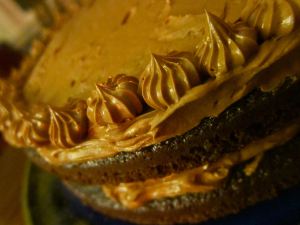 And know that I share the same kinds of struggles you do in employing the will power to resist the endless goodies the world has to offer. It’s hard enough when you’re out, so make your home a healthy place. By all means, don’t keep chocolate cake with outrageous buttercream like this just sitting around the house. (This was a birthday cake for my chocolate-loving hubby.)
And know that I share the same kinds of struggles you do in employing the will power to resist the endless goodies the world has to offer. It’s hard enough when you’re out, so make your home a healthy place. By all means, don’t keep chocolate cake with outrageous buttercream like this just sitting around the house. (This was a birthday cake for my chocolate-loving hubby.)
You can do it!
WE can do it!

